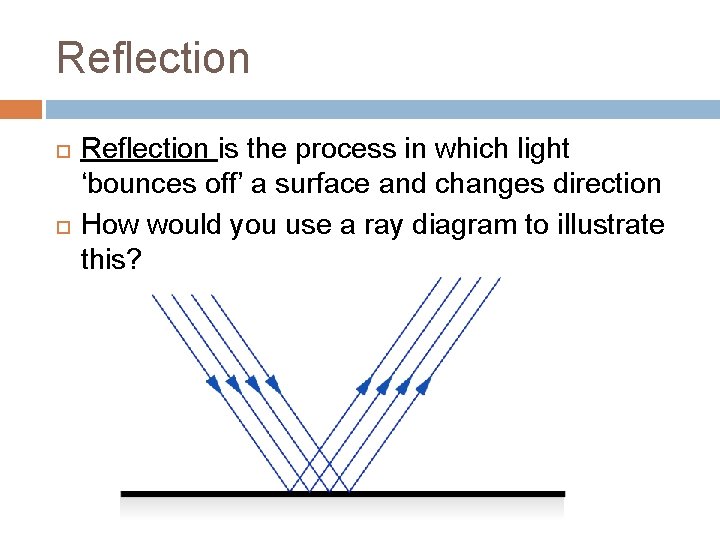Light, an electromagnetic wave, plays a pivotal role in the interactions between objects and their surroundings. As a light source moves away from an object, the implications span across various spheres of physics, encompassing concepts such as intensity, Doppler effect, and perception. This article delves into these dimensions and elucidates the multifaceted phenomena that transpire when a light source recedes from an object.
1. Variation in Light Intensity
One of the primary effects of a receding light source is the attenuation of light intensity. The relationship between distance and intensity is governed by the inverse square law, which posits that the intensity of light diminishes proportionally to the square of the distance from the source. Mathematically expressed as I = P / (4πr²), where I is intensity, P is power, and r is the distance from the source, this principle signifies that as the distance (r) increases, the intensity (I) experienced by an observer or an object decreases dramatically.
In practical scenarios, this reduction in intensity can lead to various perceptual outcomes. For instance, consider the scenario of a spotlight illuminating a stage. As the spotlight is drawn away, performers become less visible, an effect that can drastically alter the intended aesthetic and emotional resonance of a performance.
2. The Doppler Effect: A Shift in Wavelength
The movement of a light source away from an object also invokes the Doppler effect, a phenomenon predominantly associated with sound but equally applicable to electromagnetic radiation. When the source of light moves away, the wavelength of the emitted light stretches, resulting in a redshift. This shift alters the frequency of light waves, leading to a change in color perceived by an observer.
In astronomical observations, redshift serves as a critical tool for understanding the universe’s expansion. The light from distant galaxies exhibits redshift, indicating their receding nature, which provides insight into cosmic dynamics and the Big Bang theory. Thus, the Doppler effect elucidates not only mundane light interactions but also cosmic phenomena on an expansive scale.
3. Pixelation in Digital Imaging
In the realm of digital imaging and photography, the distance between a light source and an object is pivotal. As a light source diminishes in proximity, the resultant image quality can deteriorate due to pixelation. Pixels, the minute dots that compose a digital image, rely on the fidelity of light captured by sensors. When light diminishes, the sensors receive less information, leading to less detailed, more pixelated images.
Professional photographers often utilize reflectors and diffusers to manipulate light, ensuring that subjects maintain clarity even at variable distances. Understanding the interplay of distance, light intensity, and image fidelity becomes crucial for achieving high-quality visual outputs in both artistic and commercial photography.
4. Changes in Shadow Dynamics
As light sources recede, the characteristics of shadows cast by objects change dramatically. The distance from the light source alters the size and sharpness of shadows. Specifically, greater distances result in softer, more diffused shadows. This phenomenon can be attributed to the divergent paths that light rays take as they emanate from a point source.
In artistic endeavors, the manipulation of shadows becomes an essential element in composition. Artists often leverage the quality of light and shadow to evoke emotions or to guide the viewer’s gaze. Thus, the spatial relationship between light sources and objects not only influences visibility but also enriches the narrative dimension of visual art.
5. Optical Illusions and Perception
The perception of an object can shift dramatically with variations in light intensity and distance. Optical illusions often exploit these shifts to create effects that deceive the human eye, leading to misinterpretations of size, distance, and shape. The famous Penrose triangle, for instance, remains a paradox primarily due to the ways light interacts with our perceptual faculties.
Furthermore, phenomena such as atmospheric perspective illustrate how light diminishes colors and contrasts with distance. Objects in the distance appear hazier and often bluer due to the scattering of light by atmospheric particles. This understanding is not merely academic; it has practical implications in fields ranging from aeronautics to virtual reality design.
6. Effects on Biological Systems
The ramifications of a receding light source extend even to biological systems. Plants, for instance, depend on light for photosynthesis, and a decrease in light intensity due to distance can inhibit their growth. Phototropic responses, where plants orient towards light sources, are imperative for maximizing photosynthetic efficiency. In ecosystems, changes in light availability can cascade through food webs, affecting herbivores and subsequently, predators.
Moreover, human physiological responses also hinge on light exposure. Natural light influences circadian rhythms, sleep patterns, and psychological wellbeing. A decrease in light intensity can lead to phenomena such as Seasonal Affective Disorder (SAD), highlighting the critical role that light plays in human health and behavior.
7. Technological Innovations
Innovations in technology increasingly leverage these principles of light behavior. Lidar (Light Detection and Ranging) technology, which uses light pulses to measure distances, is predicated on the understanding of light properties, including attenuation and reflection. Such technologies harness the principles of light propagation, enabling advancements in fields such as autonomous vehicles and topographical mapping.
In summary, the movement of a light source away from an object reverberates through a multitude of scientific domains. From changes in intensity and color perception to implications for biological systems and technological applications, a simple shift in the distance of light can yield complex and profound effects worthy of thorough exploration. This intricate interplay underlines the fundamental nature of light in our understanding of the universe and our place within it.












